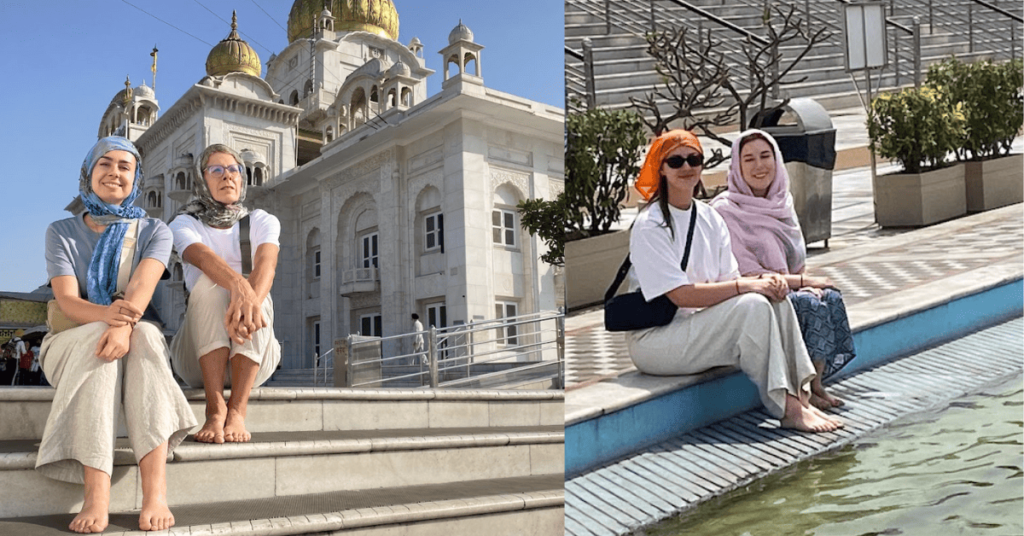Gurdwara Bangla Sahib Tour Guide welcomes you, “Gurudwara Bangla Sahib is a place where you find an Interaction between Heaven and Earth” where history whispers tales of devotion and selfless service. This tranquil sanctuary, bathed in the warm glow of its golden dome, reflects a rich tapestry woven with threads of spirituality and generosity. Embark on a journey through time, as we delve into the very roots of Sikhism in Delhi. From its humble beginnings as a simple bungalow owned by the noble Raja Jai Singh, Gurdwara Bangla Sahib has blossomed into a magnificent spiritual haven. Within its serene walls, a sense of peace washes over you, a testament to the enduring legacy of Guru Har Krishan and the countless acts of compassion performed here.
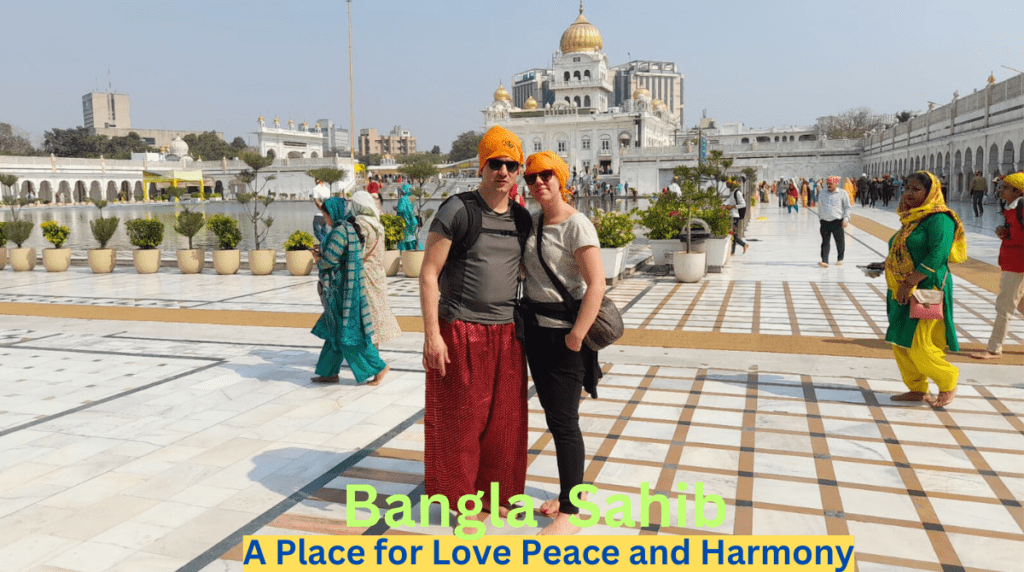
What Makes Gurdwara Bangla Sahib Special?
Gurdwara Bangla Sahib is not just a religious site for Sikhs; it is a symbol of unity, peace, and service to humanity. Located in the heart of Delhi near Connaught Place, this grand Sikh temple is a must-visit on any Delhi tour. The Gurdwara’s serene atmosphere, coupled with its divine beauty, attracts thousands of devotees and tourists alike.
The iconic golden dome and its reflection in the sacred Sarovar (water tank) are mesmerizing. A Gurdwara Bangla Sahib tour guide will tell you that this holy shrine is deeply connected to the eighth Sikh Guru, Guru Har Krishan, who stayed at this site in 1664. It was here that he selflessly served the people suffering from a smallpox epidemic and eventually sacrificed his own life to the cause.
Gurdwara Bangla Sahib Tour Guide: Exploring the Spiritual Heart of Delhi
The best way to truly experience Gurdwara Bangla Sahib is by taking a guided tour. A Gurdwara Bangla Sahib tour guide will help you navigate through its various elements, explaining their significance. The guide will ensure that you not only witness the architectural beauty but also understand the deep-rooted spiritual and historical significance of the Gurdwara.
Visitors are welcomed warmly, regardless of their religion, race, or background. As your Gurdwara Bangla Sahib tour guide will explain, the Gurdwara operates on the principle of equality. The Langar (community kitchen) serves free meals to thousands every day, symbolizing the Sikh philosophy of Seva (selfless service) and equality. It is one of the many highlights of this sacred space and provides visitors with a humbling experience.
Key Highlights of Gurdwara Bangla Sahib
- The Main Prayer Hall The main prayer hall is where devotees gather to offer prayers and listen to the soothing sounds of Gurbani (Sikh hymns). Your Gurdwara Bangla Sahib tour guide will walk you through the rituals and the sacred scriptures read here. The spiritual energy in this hall is palpable, making it an essential part of your visit.
- The Sarovar The sacred water tank, or Sarovar, is another integral part of Gurdwara Bangla Sahib. The water in the Sarovar is believed to have healing properties, and visitors often take a small amount with them as a blessing. A Gurdwara Bangla Sahib tour guide will highlight the significance of this holy water and its role in Sikh traditions.
- Langar Hall One of the most unique aspects of visiting Gurdwara Bangla Sahib is experiencing the Langar. Open to everyone, the Langar serves simple yet nutritious vegetarian meals throughout the day. Your Gurdwara Bangla Sahib tour guide will explain how this community kitchen is operated entirely by volunteers and is a testament to the values of equality and selfless service.
- The Art Gallery and Museum The Gurdwara also houses an art gallery and museum showcasing Sikh history and culture. A Gurdwara Bangla Sahib tour guide will guide you through the exhibits, providing insights into the life of Guru Har Krishan and other Sikh Gurus. These displays are not only informative but also deeply inspiring, reflecting the courage and compassion of the Sikh community.
Gurudwara Bangla Sahib is more than just a place of worship; it’s a community center radiating peace, inclusivity, and the spirit of service.
Planning Your Visit with a Gurdwara Bangla Sahib Tour Guide
If you’re planning a trip to Delhi, visiting Gurdwara Bangla Sahib should be on your itinerary. A Gurdwara Bangla Sahib tour guide will ensure you make the most of your visit by sharing the historical significance, religious practices, and the deep sense of community service that defines this sacred site.
Here are a few practical tips for your visit:
- Dress Modestly: Visitors are expected to dress modestly and cover their heads before entering the Gurdwara. Your Gurdwara Bangla Sahib tour guide will provide headscarves if necessary.
- Footwear: You will be required to remove your shoes before entering the main Gurdwara complex. There are shoe racks available near the entrance.
- Timings: The Gurdwara is open 24/7, but visiting during the daytime when the Langar is operational can enhance your experience.
- Donations: While donations are welcome, the Gurdwara’s services, including the Langar, are free for all visitors.
Delhi Tour Guide For Your Private New & Old Delhi Tours
Gurdwara Bangla Sahib’s Tour Guide: Reviews
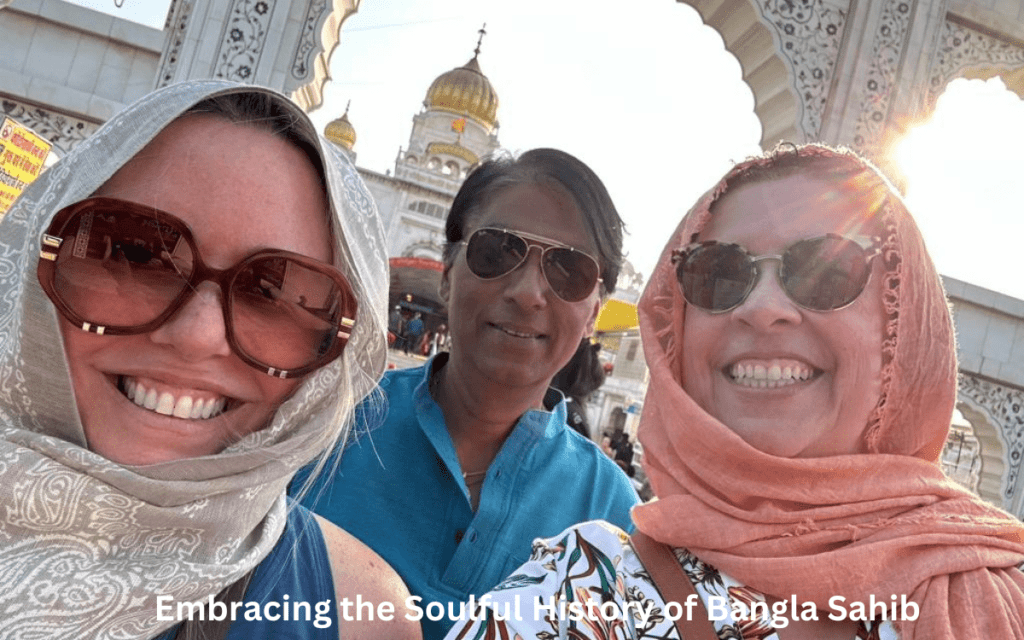
Harry, our Gurdwara Bangla Sahib Tour Guide, masterfully unfolded the historical tapestry of this sacred site, leaving us profoundly enlightened. With meticulous detail, she narrated the transformation of Raja Jai Singh’s bungalow into the revered Gurdwara Bangla Sahib, commemorating Guru Har Krishan’s compassionate presence during the smallpox epidemic of 1664. Bangla Sahib’s history came alive through Harry’s storytelling prowess, conveying the sanctity of the small tank. constructed over the well, now believed to possess healing properties. Beyond history, she highlighted the gurdwara’s modern initiatives, such as the low-cost diagnostic center inaugurated in 2021. We wholeheartedly recommend her as the best guide for an insightful exploration. Dain Basil United States
From Peace to Prints: Shop Janpath Market After Visiting Bangla Sahib
Gurdwara Bangla Sahib A Spiritual Journeys with Tour Guide

We had the most enchanting evening at Gurdwara Bangla Sahib with Harry as our tour guide. Her storytelling wove a vivid tapestry of history, taking us through the corridors of Raja Jai Singh’s house, The serene moments at Gur Harkrishan’s meditation site and the sacred Sarovar touched our souls, leaving a profound impact. Circumambulating the holy space and sharing time at the langar hall added a spiritual dimension to our visit. Gratitude to Harry for making this experience not just informative but truly soul-stirring.
Gurdwara Bangla Sahib Tour Guide: A Soulful Expedition
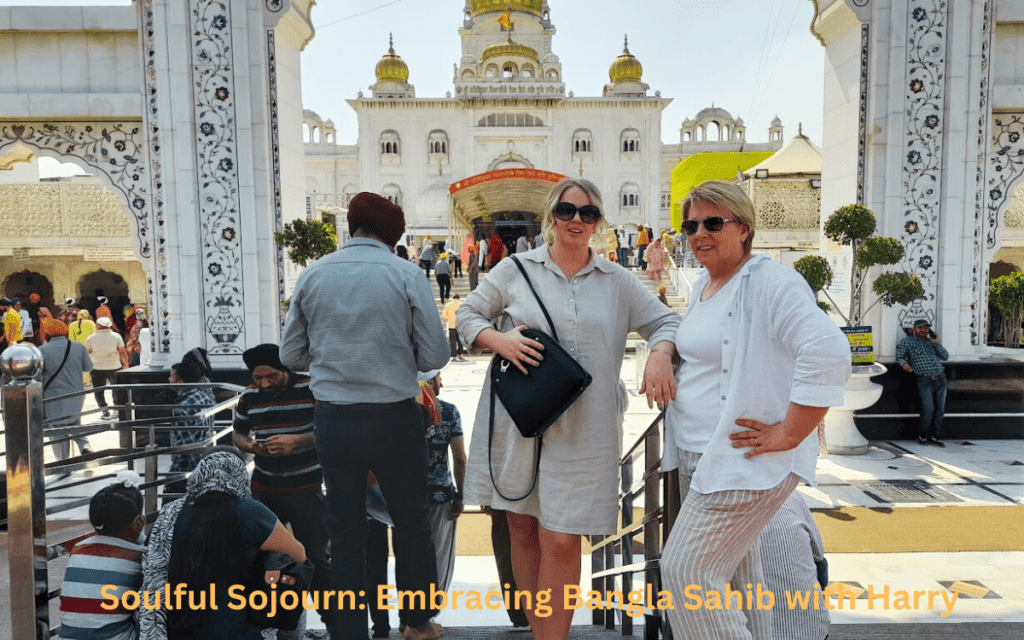
Visiting Bangla Sahib tour guide Harry was undoubtedly the best decision. Her soulful companionship added an extraordinary dimension to our visit. Harry’s passion for the Gurudwara’s history and her heartfelt storytelling created an immersive experience. Together, we delved into the spiritual ambiance, resonating with the soulful hymns. Sharing a meal at the Langar with hundreds of people, guided by Harry’s insights, was genuinely heartwarming. Her genuine connection to the place made our visit more than a tour—it became a soul-enriching journey. If you seek a guide who transforms a visit into a spiritual odyssey, Harry is the unequivocal choice.
Gurdwara Bangla Sahib Tour A History By Tour Guide

Gurdwara Bangla Sahib tour guide was an incredible experience. The soulful ambiance, the heartwarming langar in the kitchen, and the beautiful pool all left a profound impact. Harry’s guidance and insights into the traditions and rituals made the visit even more meaningful. Her passion for sharing the Sikh culture and the history of the Bangla Sahib was truly inspiring. I wholeheartedly recommend Harry as a guide to anyone looking for a profound and enlightening experience at Gurdwara Bangla Sahib. It was a spiritual journey that I will cherish forever… Stephan United States.
Mystery at Agrasen Ki Baoli Near by Bangla Saheb Gurudawar
Bangla Sahib Tour Guide: Discover the Healing Waters and Peaceful Ambiance
Gurudwara Bangla Sahib, with its huge pool called the Sarovar, is believed to contain healing waters. This sacred site is often bustling with families, children, and teens who gather around the peaceful yard. Despite the activity, the atmosphere remains calm and serene, offering a stark contrast to the chaotic streets outside. Visitors often kneel at the water’s edge, splashing their faces with the holy water, experiencing the tranquility that a Bangla Sahib tour guide can help you understand on a deeper level.

The Sarovar, considered holy by Sikhs, is also known as “Amrit,” symbolizing its spiritual and healing power. With a variety of colorful fish swimming in its clear waters, the pool adds to the divine ambiance of Gurudwara Bangla Sahib. At night, the reflection of the Gurdwara in the water resembles a shimmering pearl, creating a breathtaking view. According to Sikh belief, the waters of the Sarovar have miraculous healing properties, which is why devotees often take bottles of this holy water home with them. As your Bangla Sahib tour guide will tell you, this sacred water is cherished by people from all over the world, making the Gurudwara an unmissable destination in Delhi. The serene reflection of the Gurdwara in its Sarovar at night is a sight to behold, symbolizing peace, healing, and spirituality in the heart of bustling Delhi.
Also Visit: Famous Temples in Delhi with Guide
Gurudwara Bangla Sahib Tour Inside with Guide
Gurudwara Bangla Sahib is decorated with marble inlays and Iranian looked calligraphically styled designed on the celling.
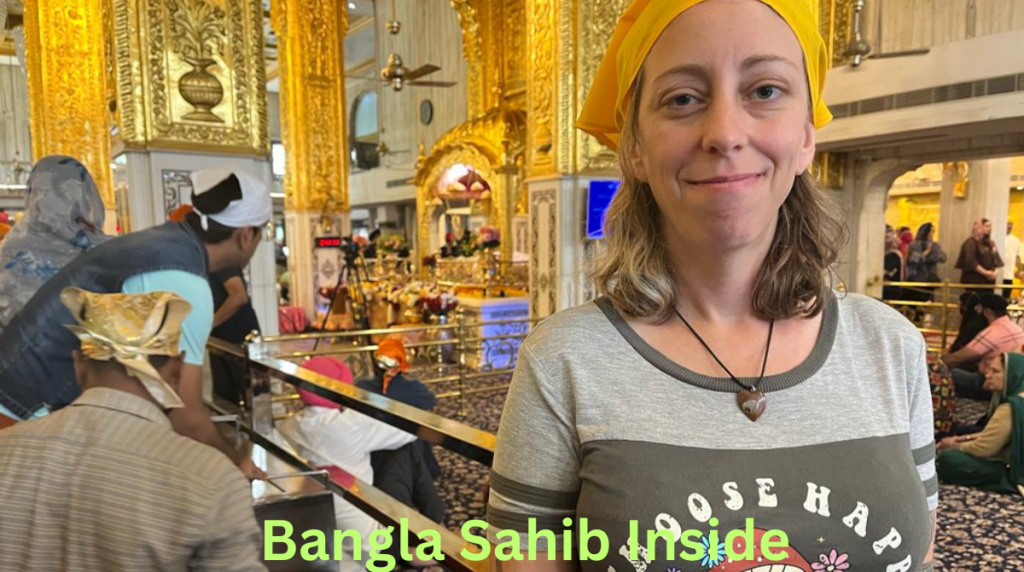
You walk inside the prayer hall, barefoot with your head covered, Devotees are bowing their heads in front of a shinning golden palanquin kept in the middle decorated with colorful flowers. The Holy book Guru Granth Sahib is resting on it covered with glittering in special kind of fabrics. One elder priest is sitting beside the book holding a chawar in his hands. Three people are singing hymns from the holy book with the help of tabla and harmonium.
Old people are facilities to sit comfortably behind on the chairs rest all sits on the carpeted floor.
Bangla Sahib Tour Guide: A Journey of Spiritual Service and the Tradition of Langar
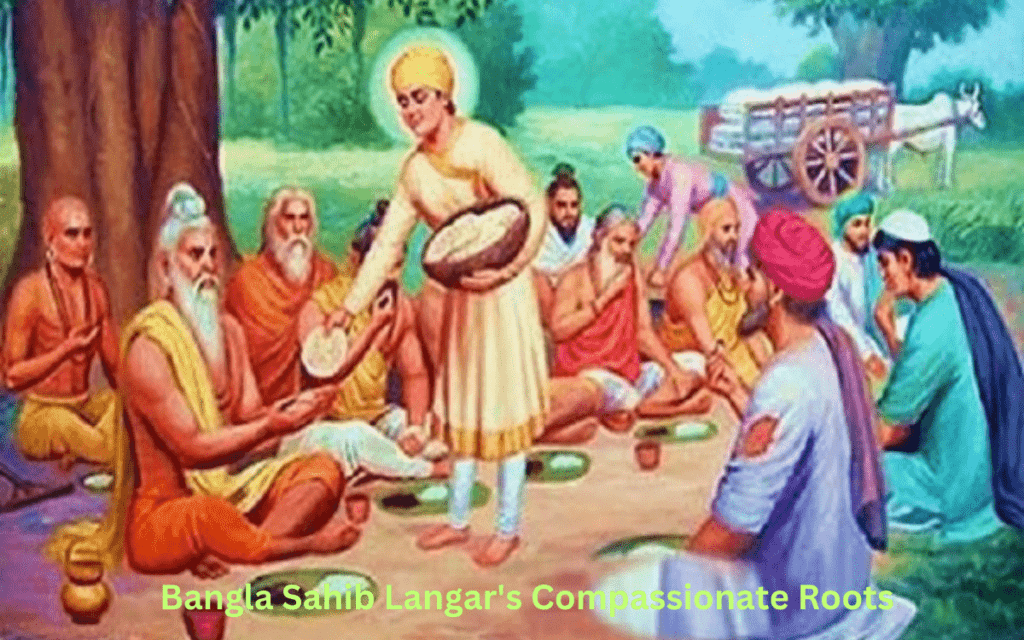
The Bangla Sahib tour guide offers a profound insight into one of the most cherished Sikh traditions—the Langar. Dating back to the late 15th century during the time of Guru Nanak Dev, this tradition of selfless service and communal meals began when the young Guru, with seed money from his father, chose to feed hungry holy men instead of pursuing a business venture. This act of compassion laid the foundation for the Langar, embodying the Sikh principles of equality, humility, and serving humanity.
At Gurdwara Bangla Sahib, the Langar hall is a massive space where food is served daily to all visitors, regardless of caste, creed, gender, or religion. As the Bangla Sahib tour guide emphasizes, the food is prepared and served by volunteers in the spirit of seva (selfless service). This simple yet nourishing meal typically consists of roti (bread), rice, dal (lentils), seasonal vegetables, and a sweet dish like kheer. The experience of having Langar at Bangla Sahib is said to leave a lasting impact on visitors, with many remarking that “there is no dal tastier than langar dal.”
Every day, hundreds of devotees and visitors come together to partake in the Langar, and many volunteer to help in its preparation and serving. On a Bangla Sahib tour guide, you will not only explore the spiritual and historical aspects of the Gurdwara but also witness the heartwarming practice of Langar, where no one goes hungry, and everyone is treated with equal respect. The Gurdwara’s belief in feeding the hungry as an expression of faith and service is a tradition that continues to this day, attracting visitors from all over the world.

Just like Continental and Mughlai cuisines have their own distinct flavors, the Bangla Sahib langar also carries a unique taste. After observing closely today, I could feel it. The veggies and lentils are soaked by the blissful hands of love, and the spices are added with prayers. Every “Wah Guru” (Praise the Lord) uttered while cooking adds to the spiritual richness of the meal. Some knead the dough, others roll, some cook, and some serve. What a lovely sight to behold! The recipe may seem simple, but its true essence lies in the devotion behind every dish—a feeling that no one can fully grasp without experiencing it themselves. Bangla Sahib tour guide will take you through the heart of this soulful service, where the langar becomes more than just food—it’s a spiritual blessing shared among all.
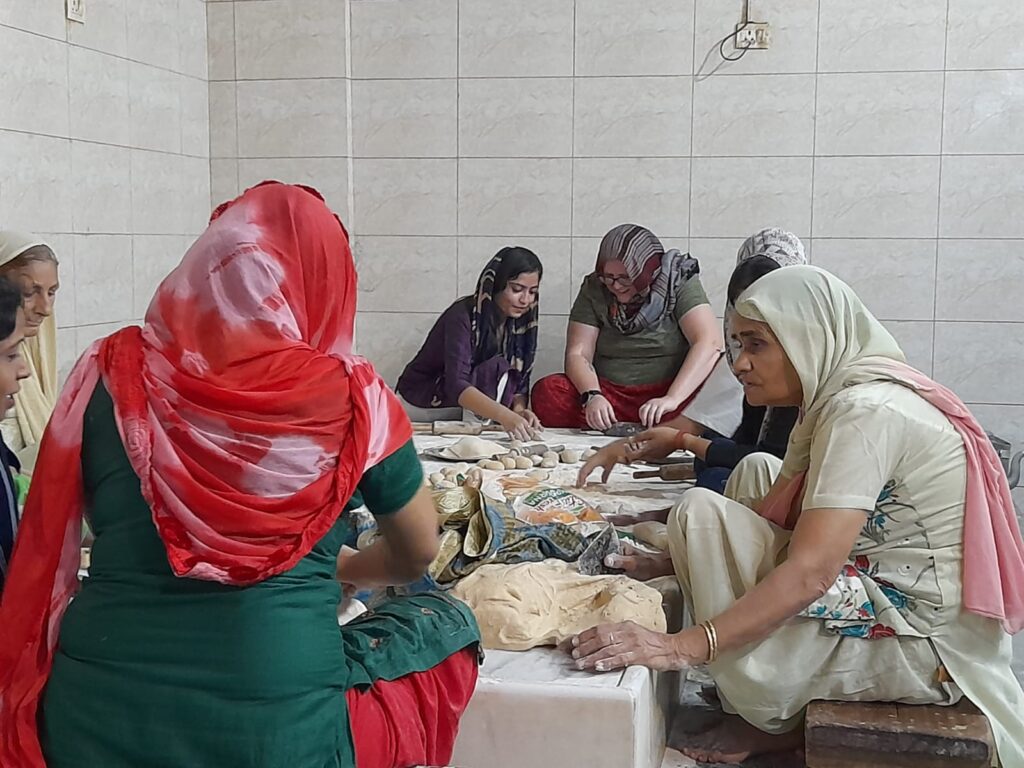
The tradition of langar at Bangla Sahib is a beautiful symbol of equality, compassion, and unity, connecting people from all walks of life. Regardless of social status, everyone sits together in the pangat (line) to share a meal, prepared and served with love and devotion. The collective cooking process is a communal effort, where individuals contribute by cooking, cleaning, and feeding others—showcasing the selfless service at the heart of Sikh values.
In the Bangla Sahib langar, the aroma of desi ghee (clarified butter) wafts through the air, stirring the appetite of thousands of people daily. From dal-chawal (lentils and rice) to sabzi-roti (vegetables and chapatis) and kheer (rice pudding), the meals are simple yet deeply satisfying. The langar hall remains busy throughout the day, serving at least 8,000 visitors with love and care.
More than just a free meal, Bangla Sahib tour guide will show you that the concept of langar is about sharing, equality, and compassion. After paying respects to the Guru Granth Sahib in the Gurdwara, everyone, whether devotee or visitor, sits together in rows, breaking down societal barriers. This communal experience is a must-see for any traveler exploring the soul of Delhi. Bangla Sahib tour guide will offer you an insightful journey into this spiritual practice, where food becomes a symbol of unity and selflessness.
The langar timings at Gurudwara Bangla Sahib are between 8:30 AM to 04:00 PM and 06:30 PM to 10:30 PM. The langar hall of Bangla Sahib fills up every 15 minutes.
Bangla Sahib Tour Guide: Unveiling the Spiritual and Historical Essence
Gurdwara Bangla Sahib, a revered Sikh temple, was built in 1664 to commemorate the visit of Guru Har Krishan, the eighth Guru of the Sikhs. Originally, this site was a bungalow or “Bangla” belonging to Mirza Raja Jai Singh, hence the name “Bangla Sahib.” The Gurdwara’s history is steeped in both spirituality and compassion, as Guru Har Krishan is believed to have used his healing powers to save the citizens of Delhi from a smallpox epidemic. Today, the Bangla Sahib tour guide highlights this sacred history, where the Amrit Sarovar (holy water tank) stands as a testament to the Guru’s miraculous healing powers.

The construction of Bangla Sahib, completed in 1783 under the guidance of Sikh General Sardar Bhagel Singh, holds great historical significance. On a Bangla Sahib tour guide, visitors learn about the spiritual power of Guru Har Krishan, who, despite being only 8 years old, recognized spiritual purity and healed many during his stay. The Bangla Sahib tour guide also sheds light on the selfless service the Guru provided, serving food and medicine to the needy while instructing his Diwan to distribute offerings to the poor.
.

Also See: Gurdwara Sis Ganj at Old Delhi Walk
Sikh Religion and Theory
Sikhism, religion and philosophy originated in the Punjab region of the Indian subcontinent in the late 15th century. Its members are called Sikhs. Sikhs refer to their faith as Gurmat (Punjabi: “The Way of the Guru”). According to Sikh tradition, Sikhism was founded by Guru Nanak (1469–1539) and led by nine other gurus. Sikhs believe that the same soul resided in all 10 human gurus. , after the death of shri Guru Gobind Singh (1666–1708), the soul of the eternal Guru transferred himself to the holy book, the Guru Granth Sahib (“Book of the Guru”), known as the Adi Granth. Also known. (“The First Volume”), after which he was considered the sole master.
The following discussion of the lives of the 10 Gurus rests on the traditional Sikh account, most elements of which are derived from hagiographic legend and tradition and cannot be verified historically. This point should be fully taken into account, especially among beginner gurus.
Sikh History
Sikh means “learner” in Punjabi, and those who joined the Sikh community, or panth (“path”), were those who sought spiritual guidance. Sikhs claim that their tradition has always been separate from Hindu religion. Nevertheless, many Western scholars argue that Sikhism in its early days was a movement within the Hindu tradition. They suggest that Nanak was a Hindu and ultimately belonged to the ascetic tradition of northern India, a movement associated with the great poet and mystic Kabir (1440–1518). The saints, most of whom were poor, homeless and illiterate, composed hymns of great beauty expressing their experience of the divinity they saw in all things. Their tradition was strongly influenced by Vishnu bhakti (the bhakti movement within the Hindu tradition that worships the god Vishnu), although there were significant differences between the two. Like the followers of Bhakti, the sages believed that devotion to God is necessary to escape the cycle of rebirth in which all human beings are trapped. However, unlike the followers of Bhakti, the sages maintained that God is nirgan (“without form”) and not sagan (“with form”). For sages, God can neither be embodied nor presented in a concrete form.
Gurudwara Bangla Sahib Tour Guide: The Art Museum
inside the museum complex one can find interesting pieces of Sikh history, from old manuscripts of Sukhmani and Japji to handwritten mantras and Chhote Granth Sahib by Guru Arjun Devji, Sikh gurus on canvas and their Colourful statement of childhood. Coins from the early centuries and legendary battlefield scenes live on the walls of this museum. Within walking distance is a library that promises to tell you the importance of the turban, and on its shelves is a large text books of Sikh religion and history.
Bangla Sahib Nearest Metro Station How To Reach?
Gurudwara Bangla Sahib is located in Connaught Place which is also called the heart of Delhi. It is easily accessible via the Blue Line and the Yellow Line Metro. If you are traveling on the Blue Line Metro, get off at Rajiv Chowk. Also, take an auto rickshaw to reach the Gurudwara which is 2 km from the station. Patel Chowk Metro Station is the nearest metro station on the Yellow Line. Shivaji Stadium Metro Station (on the Orange Line). The Gurdwara Bangla Sahib is located at a distance of 2 km from Bangla Sahib. This attraction also has a dedicated bus stop, so you can get off there and cover a distance of about 1 km to reach your destination. Alternatively, you can hire a taxi to reach Gurudwara Bangla Sahib Tour Guide
Bangla sahib timings
- The gurudwara Bangla Sahib is open 24 hours, all days of the week.
- Bangla Sahib Entry is free for every one.
Gurudwara Bangla Sahib Contact no.
Head Office Reception: 011-23712580-81-82, 011-23737328-29
“The world is full of magic things, patiently waiting for our senses to grow sharper.” – W.B. Yeats.
Bangla Sahib Gurudwara Tour Guide
While visiting Bangla sahib, please show respect for the local culture and do not do things that are against the norms of Temple culture. maintain the decency, so dress appropriately and cover your entire body. Always ask permission before taking photographs of any person.
